Optimal Storage Solutions for Fresh Lettuce
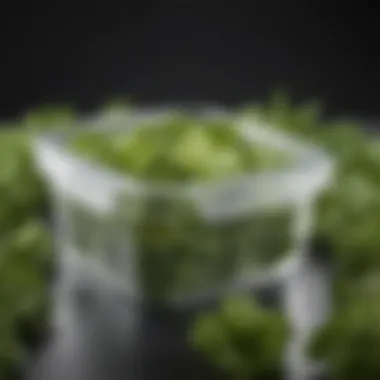
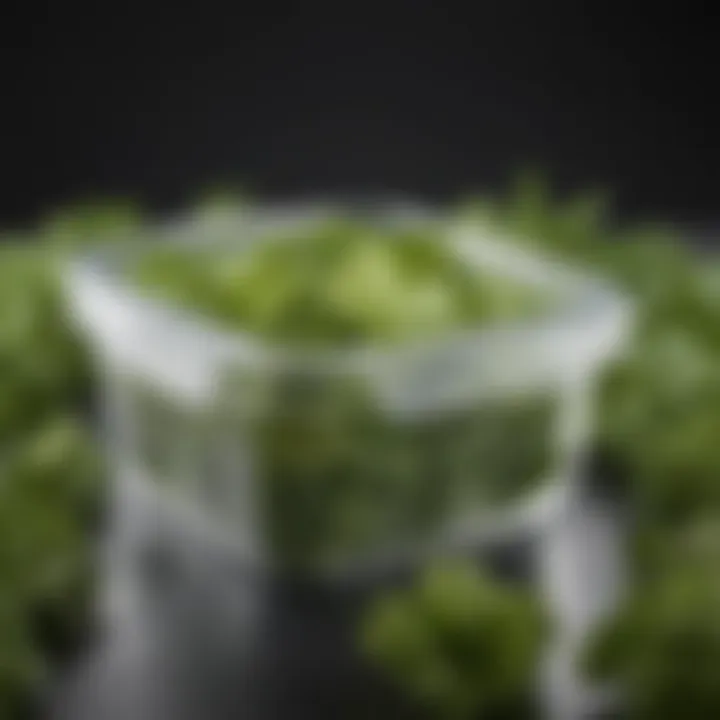
Intro
When it comes to preserving the delicate crunch and vibrant flavor of lettuce, choosing the right container for refrigeration plays a crucial role. For those venturing into the world of culinary creativity, ensuring that your fresh greens stay appealing involves not only the right tactics but also an understanding of how to avoid common pitfalls. Within the realm of refrigeration, a well-thought-out storage solution can mean the difference between wilted leaves and crisp salads.
Understanding the principles of proper lettuce storage can save both time and money, as well as heighten the sensory experience of your meals. In this engageing exploration, we’ll delve into the types of containers that best suit various types of lettuce, the scientific rationale behind these choices, and the best practices you can adopt to maintain flavor and freshness. You'll also uncover common storage mistakes that could diminish your leafy green investments, arming yourself with knowledge to avoid such errors in the future.
With the right guidance, those with busy lives can seamlessly incorporate these fresh ingredients into their meals, enriching their culinary endeavors without additional stress. Whether you're a seasoned chef or a novice in the kitchen, this guide aims to cut through the clutter and simplify your quest for optimal lettuce storage.
Understanding Lettuce and Its Storage Needs
Before diving into container specifics, it’s vital to grasp why lettuce is different from other vegetables. Lettuce possesses high water content, making it particularly susceptible to both dehydration and spoilage. This requires a different approach compared to standard vegetables, as factors like humidity, temperature, and even air exposure can greatly impact its longevity.
Choosing the right container not only protects against moisture loss but also preserves the crunch and flavor. Thus, it’s crucial to select containers that are tailored to the specific type of lettuce you're working with, be it romaine, butterhead, or leaf lettuce.
Key Factors to Consider in Lettuce Storage
- Moisture Control: Ensuring the right balance of moisture is key to maintaining freshness.
- Temperature Regulation: Keeping lettuce at a consistent, cool temperature will slow down deterioration.
- Airflow: Proper airflow helps to prevent excess moisture buildup.
In the upcoming sections, we will provide a breakdown of the various containers available, explore effective storage techniques, and share some essential tips to help your lettuce last as long as possible.
Understanding Lettuce and Its Storage Needs
When it comes to culinary art, the foundation is always the ingredients used. Lettuce, often regarded as a staple in salads, sandwiches, and even garnishes, plays a significant role in meal preparation. However, the journey from farm to table is not just about picking fresh leaves. Understanding how to store lettuce properly can drastically influence its flavor, texture, and nutritional value. This section delves into the essentials of lettuce storage, highlighting why freshness matters, the different varieties available, and their unique storage needs.
The Importance of Freshness
Freshness is paramount, particularly with lettuce. The crisp, refreshing crunch of a fresh leaf can elevate a mundane dish to new heights. Lettuce that is well-stored not only retains its texture but also sustains the vibrant flavors we all appreciate. On the other hand, when left to wilt or rot, it turns into a soggy mess that can ruin a meal and waste your hard-earned dollars.
Keeping lettuce fresh isn’t just about taste; it’s also about nutrition. The longer it sits improperly stored, the more nutrients it loses.
Fresh lettuce not only enhances the aesthetic appeal of dishes but is also crucial for maintaining a balanced diet. It's packed with vitamins like A, C, and K, and keeping it fresh helps ensure these nutrients are available when it's time to eat. To retain its crispness, one must understand the fundamental principles of how moisture, temperature, and light affect lettuce.
Lettuce Varieties and Their Characteristics
Lettuce isn’t just lettuce; there are numerous varieties, each with distinct characteristics that dictate how they should be stored. Here’s a closer look at some popular types:
- Romaine: Known for its sturdy ribs and robust flavor, romaine holds up well under various storage methods, making it a favorite for salads.
- Iceberg: Often referred to as the classic crunch, iceberg lettuce is susceptible to moisture damage. Proper drying is key before storage.
- Butterhead: With its tender leaves and sweet flavor, butterhead can be quite fragile. Excess air exposure can lead to rapid deterioration.
- Leaf Lettuce: This includes red and green varieties. Their delicate nature means they often require extra care in storing to keep them fresh.
Each type requires slightly different storage strategies due to their textures and moisture content. It is important to recognize these distinctions to prevent waste and ensure quality. A little careful planning and knowledge can save a lot of time and prevent disappointment when you reach for that leafy green for your next meal.
Exploring Different Container Options
When it comes to storing lettuce, the container you choose can make all the difference in maintaining the crispness and flavor of the greens. Unlike other vegetables, lettuce is particularly sensitive to its storage conditions. Exploring different container options is essential for ensuring that your lettuce not only stays fresh but also retains its nutrients and pleasant texture. Each type of container brings its own set of benefits and drawbacks. By making an informed choice, you enhance the longevity and quality of your lettuce, contributing significantly to your culinary experience.
Plastic Containers: Pros and Cons
Plastic containers are among the most common storage options for lettuce. They are lightweight and often come with secure lids, preventing unwanted exposure to air. However, it's crucial to consider the material. Not all plastic is made equal; some may contain chemicals that can leach into food over time. On the plus side, plastic containers are generally affordable and come in various sizes, making them suitable for different amounts of lettuce.
- Pros:
- Cons:
- Lightweight and portable
- Usually airtight, which helps keep the moisture in
- Various sizes to choose from
- May contribute to unwanted odors
- Potential for harmful chemical leaching
- Not as durable as glass alternatives
It’s wise to look for BPA-free plastic options to minimize any risks. Using these types of containers can keep your lettuce fresh without compromising your health.
Glass Containers: A Safer Choice
If you're looking for a more sustainable option, glass containers may stand out as a better choice for storing lettuce. They come with no risk of chemical leaching, providing peace of mind while storing your greens. In fact, glass containers can be particularly effective because they are a non-porous material that does not retain stains or odor.
- Pros:
- Cons:
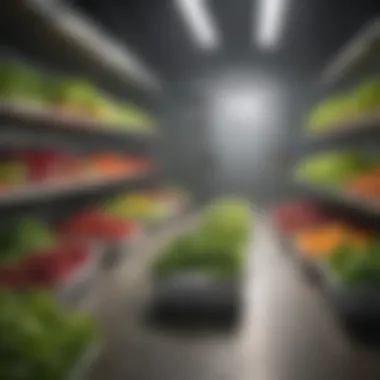
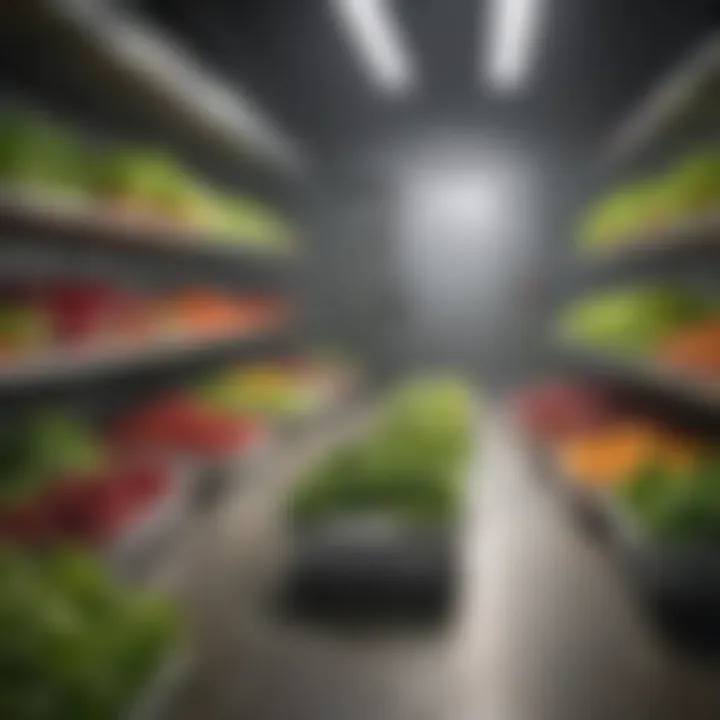
- Non-reactive and free from harmful chemicals
- Does not retain odors or stains
- Provides better visibility of contents
- Heavier and more fragile than plastic
- Can be more expensive
- Requires more careful handling
For those who prioritize safety and sustainability, glass containers make a sound choice. They can also be used for other snacks or meal prep, making them versatile in the kitchen.
Reusable Produce Bags: An Eco-Friendly Alternative
For those who want to tread lightly on the environment, reusable produce bags offer an excellent eco-friendly alternative to traditional plastic or glass containers. These bags, typically made from breathable materials like cotton or mesh, allow for air circulation while keeping the lettuce from getting too moist or too dry.
- Pros:
- Cons:
- Lightweight and easy to store
- Reduces single-use plastic consumption
- Promotes airflow, reducing the chance of spoilage
- Not entirely airtight, which may reduce freshness slightly
- Can get dirty and must be washed regularly
- May not protect from physical damage
Still, the flexibility to toss these bags into your wash makes them a practical choice, especially for those already embracing a sustainable lifestyle. Investing in your produce storage not only benefits your lettuce but helps contribute to a greener planet.
Choosing the right storage container is key to maximizing the life and freshness of your lettuce.
Each container option carries its weight in pros and cons, ultimately reflecting your personal preferences and lifestyle. By weighing these factors, you can select the optimal way to keep your lettuce ready for your next culinary adventure.
Science of Lettuce Storage
Understanding the science behind lettuce storage reveals vital elements that help maintain its freshness and flavor. Letting little details like humidity levels and temperature control slip through the cracks can lead to a wilting disappointment instead of a crisp delight. Among various greens, lettuce is particularly sensitive to its environment. Therefore, knowing how to properly store it helps preserve its nutritional value and overall quality for as long as possible.
Humidity and Temperature Effects
Humidity plays a crucial role in keeping lettuce fresh. Leafy greens need a relative humidity of around 90-95% to maintain their crisp texture. Too little moisture will cause them to dry out, while excess moisture can lead to mold and rot. This is where the choice of container becomes critical. Plastic wrap may trap moisture but can foster an environment ripe for decay. Alternatively, ventilated containers allow air circulation and help regulate humidity levels, thus lengthening lettuce's shelf life.
Temperature is another factor in the equation. Ideally, storing lettuce between 32°F and 36°F is recommended. Anything warmer and the greens will wilt; anything colder could potentially damage the delicate leaves. Placing the container in the vegetable crisper drawer of your refrigerator is wise, as it is designed to maintain a more stable humidity and temperature environment.
*"Keeping this veggie at optimal moisture and temperature levels is akin to providing it with a cozy home where it can thrive instead of turning into a sad, limp leaf."
Ethylene Gas Influence on Freshness
Ethylene gas, a naturally occurring plant hormone, significantly impacts the freshness of produce, including lettuce. When fruits like bananas and tomatoes ripen, they emit ethylene gas. This gas can accelerate the aging and spoilage of other produce nearby. Lettuce, being particularly susceptible, tends to yellow and deteriorate faster when exposed to ethylene.
To combat this issue, it's best to store lettuce away from ethylene-producing fruits. Some handy tips include:
- Separate Storage: Keep your lettuce in a separate shelf or drawer away from fruits.
- Ethiop on the Packing: When purchasing produce, look for lettuce that comes packaged without ethylene-prone neighbors.
Using these considerations can significantly help in prolonging the vibrancy of your lettuce greens and retaining the crisp bite that one desires.
In summation, understanding the nuanced scientific principles of lettuce storage is paramount for culinary enthusiasts aiming to get the most out of their fresh produce. By paying attention to humidity, temperature, and ethylene gas effects, one can create the perfect storage conditions to keep the leafy greens alive, vibrant, and quite delectable.
Best Practices for Storing Lettuce
Storing lettuce properly can make a world of difference when it comes to freshness and taste. It’s not just about tossing it in the fridge and hoping for the best. Understanding the optimal practices for storage can extend its shelf life and keep its crispness intact. Some of these practices may seem obvious, while others might surprise even the seasoned kitchen warrior.
To keep lettuce as fresh as a daisy, several factors need to be considered, including how you handle and prepare the lettuce before it even hits the fridge. These simple best practices are your allies in the quest for vibrant salads and crisp toppings.
Prepping Lettuce for Storage
Cleaning and Drying
Cleaning and drying may not sound riveting, but it's right at the heart of effective lettuce storage. Removing any dirt or contaminants not only makes your lettuce more palatable but also taints it with moisture that can lead to quicker spoilage. Lettuce is a delicate green, and with moisture, it can become a wilting shadow of itself. When washing, it is crucial to do it gently; no one wants soggy leaves from the get-go.
The cleaning process also involves drying the lettuce thoroughly. A salad spinner is popular for this task, as it whips away excess water without bruising the leaves. The key characteristic here is that moisture is the enemy; too much can cause rot and sliminess.
While many understand the benefits of cleaning, some might overlook the drying component. Not drying effectively can inadvertently lead to a soggy mess—nobody wants that with their greens. A distinct advantage of this practice is that it also helps to keep your container fresher for longer.
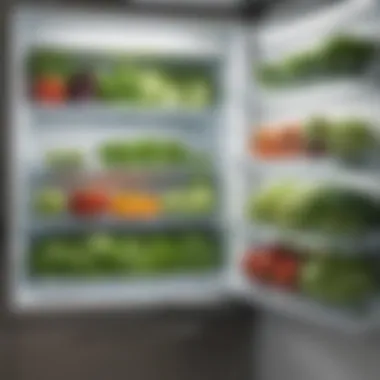
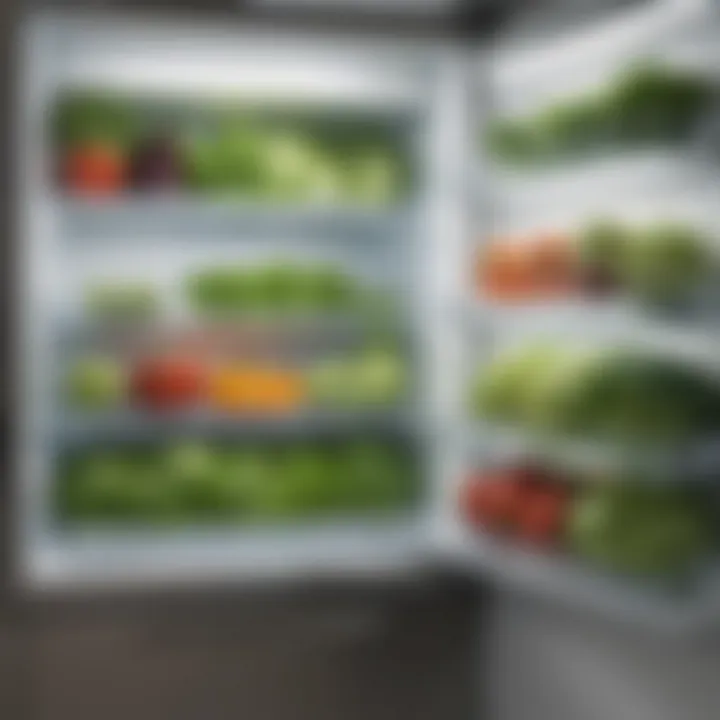
Cutting Techniques
When it comes to cutting lettuce, technique matters more than you’d think. Shredding or slicing too finely can release juices that degrade the freshness of the greens faster than you can say "salad bar." Instead, think about larger cuts; this not only retains the crunch but also encourages better air circulation in your storage container.
A key characteristic of proper cutting techniques is that they allow for maximum freshness retention. Cutting it into larger pieces can minimize bruising, preserving those lovely green hues and flavors.
One of the unique features of smart cutting is that it also allows for flexibility when incorporating into meals. If you’ve got a versatile lettuce base, you can throw it in salads, sandwiches, or wraps with ease. However, cutting can sometimes lead to quicker spoilage since exposed edges can dry out. So, it's a fine line to walk.
Optimal Refrigerator Placement
The way you place your lettuce in the refrigerator plays a vital role in its longevity. Ideally, you want to keep it in the crisper drawer, designed to maintain moisture levels without making things too humid. This area is perfect for your leafy friends because it helps manage temperature fluctuations, thus preserving the greens better than your regular shelves.
Keeping lettuce away from items that release ethylene gas—such as tomatoes or bananas—is also crucial. This gas can speed up decay, turning your fresh bounty into a wilted pile of leaves before you know it.
In terms of organization, it’s beneficial to keep your lettuce subtly elevated from the bottom of the crisper to allow for air circulation. A simple technique is to place a paper towel at the bottom of the container to soak up any excess moisture, which keeps everything drier and crisper.
Using Paper Towels to Absorb Moisture
An underestimated method in preserving freshness involves the humble paper towel. Placing a paper towel in your storage container can significantly mitigate moisture levels, absorbing the humidity that tends to accumulate. If you’ve washed and dried your lettuce but still find it wilting away too fast, this method is a prime solution.
This practice not only helps to extend freshness but also keeps your greens crisp. Plus, it’s an easy fix that requires no extra gadget or fancy tools.
By swapping out damp paper towels every now and then—perhaps throwing in another layer or two—you can keep your lettuce in prime condition. It’s a simple technique, but it can lead to remarkable results in the longevity of your beloved greens.
Maintaining proper storage techniques isn’t merely about extending shelf life; it’s about ensuring that every bite of your lettuce is as fresh and flavorful as possible.
Common Mistakes in Lettuce Storage
Storing lettuce may seem straightforward, yet many culinary enthusiasts stumble over a few critical missteps that can alter the quality of their greens. Understanding common mistakes in lettuce storage is essential for anyone who wants to maintain the freshness and taste of their leafy companions. By being aware of these pitfalls, one can extend the shelf life of lettuce significantly, ensuring that each bite is a crisp delight.
Ignoring Moisture Levels
One of the cardinal errors in storing lettuce is neglecting moisture control. Lettuce thrives in humid environments, but too much moisture leads to a quick decline in freshness. When storing, it’s crucial to strike a balance. If lettuce is washed and not dried thoroughly, it may end up in a puddle at the bottom of the container. That excess water will promote rot and wilting faster than you can say, "salad bar".
Consider using a salad spinner after washing to remove residual water. For added protection, lining the container with a paper towel can help absorb any excess moisture while allowing some humidity to remain. It’s about creating a mini-greenhouse effect without turning into a swamp.
"Just like a well-tended garden, the right moisture can make all the difference when it comes to freshness."
Using Non-Ventilated Containers
Another significant oversight lies in opting for non-ventilated containers. It’s tempting to throw lettuce into any old tupperware, but this can lead to soggy greens that are best suited for a compost pile. Lack of ventilation traps humidity, which can lead to mold growth and spoilage.
Opt for containers that allow air to circulate. Containers with holes or mesh lids can be excellent choices. That fresh air helps keep the greens crisp. Also, if you’re using plastic bags, don’t seal them completely. A few small openings can do wonders for air circulation and moisture management.
Storing Near Ethylene Producing Fruits
Last but not least, many people miss the mark by placing lettuce too close to ethylene-producing fruits, such as bananas and apples. Ethylene gas speeds up the spoiling process and can turn your crisp romaine into a soggy mess quicker than you can whip up a dressing.
To avoid this, maintain some distance in your refrigerator. Store lettuce in a separate drawer or compartment, away from any ethylene-emitting produce. A little foresight can preserve that leafy goodness.
In summary, by paying attention to moisture levels, choosing the right containers, and being mindful of nearby produce, you can sidestep the common pitfalls of lettuce storage. Proper practices not only help maintain their freshness but also ensure the flavors shine through in your dishes.
Maximizing Storage Time
In the realm of food preservation, especially for delicate items like lettuce, maximizing storage time can make a world of difference. This is not merely about keeping your greens from wilting, but about enhancing their usability in the kitchen. Freshness impacts not just the taste but the nutritional value too. Knowing how to extend the life of lettuce is crucial, especially for those busy individuals or culinary enthusiasts aiming to minimize waste and optimize their grocery budget. By employing certain strategies, you can prolong that crispiness and vibrancy that makes lettuce such a popular ingredient in salads and beyond.
Vacuum Sealing for Longevity
Vacuum sealing stands out as one of the more notable methods for keeping lettuce fresh longer. By removing the air from the packaging, this technique drastically slows down the oxidation process, protecting the leafy greens from turning brown or becoming mushy. Not only does this method preserve the lettuce's texture, but it also helps maintain its flavor profile.
To vacuum seal your lettuce:
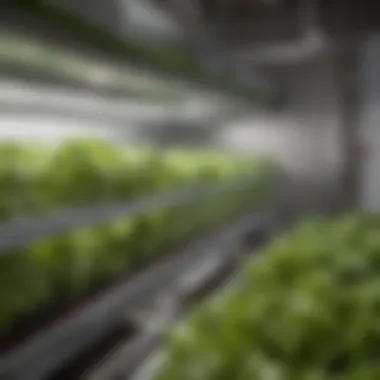
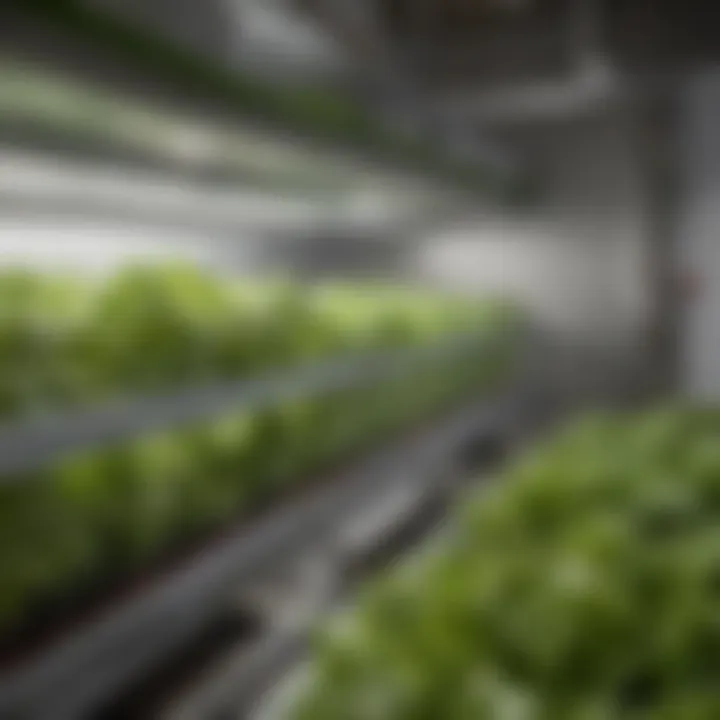
- Wash and dry: Ensure the lettuce is thoroughly washed and completely dried.
- Portion it out: Instead of sealing the whole head, break it down into portions, which reduces exposure each time you open the bag.
- Seal it tight: Use a vacuum sealer to remove air completely and seal the bag, ensuring no air leaks in.
Once sealed, place it in the fridge. It’s common to hold a vacuum-sealed bag for about a week or even longer, but regular checks are wise. If you spot any moisture or signs of decay, it’s better to toss it.
"Vacuum sealing isn't just about putting food away; it’s about breathing new life into your ingredients for later use."
Freezing Lettuce: Is It Worth It?
Freezing lettuce can stir up a bit of controversy. Some swear by it as a way to keep leafy greens for extended periods while others caution about the texture changes after thawing. So, what’s the verdict?
The reality is simple. Freezing can extend the life of lettuce but it does come with trade-offs. If you're planning to use the lettuce in soups, smoothies, or blended dishes, freezing can be effective. Here’s how to freeze lettuce effectively:
- Blanching: Briefly blanched lettuce can retain color and flavor better when frozen.
- Chop it up: Cutting the lettuce into smaller pieces can help it freeze more evenly.
- Use airtight bags: Ensure you use freezer-safe, airtight bags to prevent freezer burn.
However, if you favor crisp salads, it’s advisable to steer clear of freezing lettuce. Once thawed, it tends to lose its crunch and may become mushy, turning your salad into a watery mess. Therefore, evaluate your future uses of the lettuce before deciding on freezing as a method.
In short, while freezing provides an option for extending storage time, it may not always align with the desired texture needed for fresh dishes. Choose wisely, and always tailor your storage strategies to your culinary needs.
Practical Tips for the Busy Individual
When it comes to storing lettuce, busy schedules often get in the way of proper techniques. However, knowing how to efficiently manage the preparation and usage of lettuce can be a game changer for culinary enthusiasts. Having fresh lettuce on hand not only enhances meals but also contributes to a healthier lifestyle. Here are some practical tips specifically designed for individuals who wish to optimize their time in the kitchen while ensuring their leafy greens maintain their crispness.
Batch Prepping Lettuce
The concept of batch prepping might seem like an extra chore, but it can save you heaps of time in the long run. Imagine Sunday evening rolling around and you decide to wash, dry, and chop a week’s worth of lettuce all at once. You would simply store multiple portions in various containers—consider using clear plastic or glass containers for visibility—which makes access swift and easy during the hectic weekdays.
To execute this well, follow these steps:
- Choose Fresh, Crisp Heads: Start with the best quality lettuce you can find. Check for leaves that are vibrant and free from brown spots.
- Clean Thoroughly: Rinse the lettuce leaves under cold water, removing any dirt or debris. After washing, use a salad spinner or pat it dry with paper towels.
- Chop Smartly: Depending on your meal plans, chop or leave whole. If you choose to chop, think about how you'll be using it later on—diced bits for salads, strips for sandwiches, or whole leaves for wraps.
- Store Properly: Line the containers with paper towels to absorb excess moisture, which keeps your lettuce from wilting too quickly.
This method decreases the chance of forgetting about that head of lettuce at the back of the fridge and allows for simple meal assembly later in the week.
Integrating Lettuce into Quick Meals
Utilizing lettuce in quick meal prep can transform your cooking approach. You don’t always need a complex recipe to enjoy the vibrant taste of lettuce. Instead, think of it as a versatile vehicle for different flavors.
Think about these ideas for integrating lettuce into your busy meal plans:
- Salad Wraps: Use larger leaves, like romaine, as wraps. They are perfect for holding your favorite fillings—like grilled chicken, avocado, and diced veggies.
- Garnish for Bowls: Whether it's a grain bowl or a protein dish, a handful of crisp lettuce can brighten up the plate and add texture while disappearing in a flash.
- Quick Salads: Toss together a simple salad with whatever you have on hand. Mixed greens, dressing, and a few add-ins like nuts, cheese, or legumes can create a filling dish in minutes.
- Stir-fries and Cooked Dishes: Add lettuce towards the end of cooking stir-fries to provide a slight crisp and freshness without overwhelming flavors.
By knowing how to integrate ready-to-go lettuce into various meals, you can create nutritious dishes without much hassle.
"Batch prepping and easy integration of lettuce can not only save time but also elevate culinary experiences without much extra effort."
This practicality is key for encouraging better eating habits while navigating the whirlwind of day-to-day life. With these time-saving tips, it becomes simpler to enjoy fresh, flavorful meals without the fuss.
Epilogue and Recommendations
In summarizing the wealth of information discussed, it's clear that how we store lettuce can significantly impact its freshness and overall quality. Effective container use in refrigeration is not merely a logistical task; it is an art that blends science and practicality. In this guide, various container options were explored, elucidating each one's strengths and weaknesses, thereby enabling readers to make informed decisions suited to their specific needs.
Choosing the right container—be it plastic, glass, or even reusable bags—plays a crucial role in maintaining the crispness and flavor of lettuce. Moreover, understanding the science behind storage practices, like managing humidity and temperature, is equally essential. Simple steps like prepping lettuce properly and ensuring optimal fridge placement can extend the salad’s prime quality, giving you the satisfaction of enjoying fresh greens longer.
It’s also worth mentioning the frequent mistakes that people make when storing lettuce, like disregarding moisture levels or using non-ventilated containers. Knowledge is power, and by avoiding these pitfalls, one can achieve optimal storage outcomes.
Summarizing Key Storage Techniques
Here’s a recap of key storage techniques:
- Select the Right Container: Consider using vented storage options for airflow.
- Prepping Food: Wash and dry thoroughly before storing to prevent sogginess.
- Control Humidity: Use a damp paper towel to help maintain right moisture levels.
- Store Strategically in the Fridge: Place lettuce in a humidity-controlled drawer, away from ethylene-generating fruits.
- Batch Process: Clean and prepare a larger quantity at once to save time.
By integrating these methods into your routine, you can enjoy lettuce at its best, enriching your meals and making healthier choices.
Encouraging Better Eating Habits
A central theme reverberated throughout our discussion: fresh, crisp lettuce is the ticket to enhancing meal quality. Integrating lettuce into daily meals shouldn’t feel like a chore. Instead, it is about culture—developing a habit where fresh greens are present at every meal.
Consider preparing one or two salads or lettuce wraps each week. This small change can catalyze healthier eating patterns. Pair lettuce with proteins or grains to create satisfying, nutrient-dense dishes. As mentioned before, having prepped lettuce on hand can save time and encourage use in everyday cooking, making it easier to throw together a quick meal.
To wrap it up, fostering better eating habits goes hand in hand with how we store the ingredients we value. Taking the necessary steps to preserve and integrate lettuce into your lifestyle could not only improve your meals but also promote overall well-being. The path to culinary creativity begins with fresh ingredients; let storage know-how guide your way.







